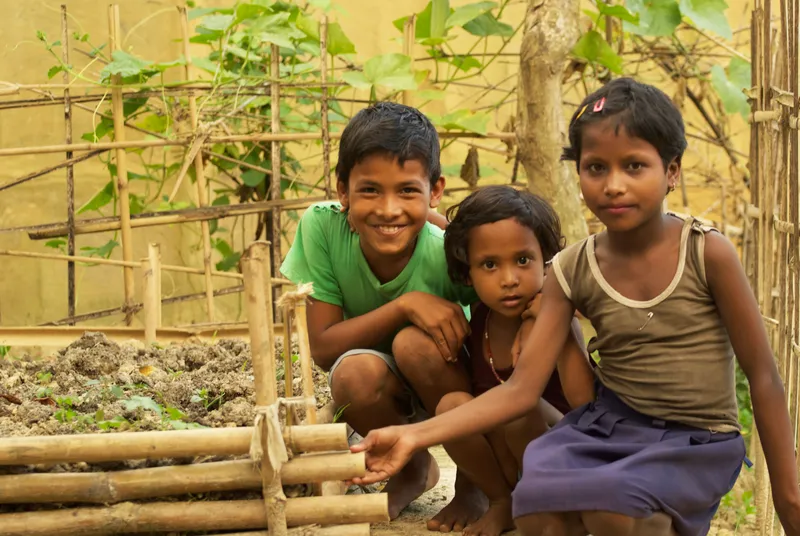How young people can help tackle climate change across sectors
There are multiple pathways in India for engaging young people as changemakers to tackle climate change. By unlocking the power of collective youth action, we can make significant progress in achieving our climate action goals.
As the 26th session of the Conference of the Parties (CoP26) – the 2021 United Nations climate change conference – wrapped up recently, this is an apt time to reflect on what’s next for tackling climate change. The goals of COP26 have been cross-cutting, clubbed into four broad areas:
- Secure global net-zero carbon emissions by 2050 and limit global warming to 1.5 degrees Celsius
- Adapt to protect communities and natural habitats
- Mobilise finance to deliver on the first two goals
- Work together to tackle the climate crisis through collaboration between governments, businesses and civil society
While these are lofty goals that will help to hold various stakeholders accountable, it will be interesting to see how these crystallise into specific actions. To catalyse collaborations, it is important to keep emphasising that climate change doesn’t happen in a vacuum; it is both impacted by and has an impact on various sectors such as health, agriculture, and education.
It is also notable that the preparation for COP26 had a specific track devoted to youth leadership in tackling climate change, called Youth4Climate.
The intersection of youth leadership and cross-sectoral solutions offers many opportunities for engaging young people in achieving COP26 goals:
1. Education and climate change
Thanks to extensive research and the creation of engaging content on this topic, we now know a lot more about climate change than we did in the decades past. However, India’s school curriculum still has untapped potential in helping children learn about how they are affected by climate change and how they could address it.
If you take the case of the Pacific island nation of Tuvalu, children are taught about climate change from the age of six. This is because Tuvalu, home to about 11,000 people with an area of 25.9 square kilometres, has witnessed how the rise of sea levels by about 0.5 centimetres every year since 1993 has gradually taken over their dry land.
It has to contend with the possibility that the country may be completely submerged someday due to rising sea levels and the entire population may have to relocate.
A child born in Tuvalu today may be part of the last generation of children to grow up in the country. Thus, educating them about climate change is prioritised.
However, other countries need not wait to be confronted with such a dire fate to integrate climate change into their curriculums. If we can help young people learn about the scale of problems and their solutions, they can champion individual efforts as well as collective action.
2. Health and climate change
Children’s health is impacted much more directly by climate change than the health of adults. For instance, as explained by the Harvard T.H. Chan School of Public Health, obesity is the number one health challenge faced by children today. Climate change makes heat waves hotter and longer, preventing children from being able to play outside, which could make it more likely for them to become obese.
Further, rising temperatures and decreased air quality affect children by increasing asthma attacks and allergies, worsening pregnancy outcomes, creating food insecurity, increasing mental health problems, developmental delays, and changes in their genetic makeup.
At the same time, we know that children are also very effective at influencing their families’ and communities’ actions. A few years ago, I was invited to judge an environment-related competition in a private school in Bengaluru. It was heartening to see students present the solutions they had developed and implemented.
Four students got most of the apartments in their building complexes to install aerators (attachments that are fitted at the end of taps to reduce the flow of water). Two students ran workshops on waste segregation and recycling in their neighbourhoods.
In one of my organisation’s surveys covering over 2,700 schoolchildren in Rajasthan, 82 percent of them said that they believed they have the ability to take charge of their own nutrition. Building on this, children can also get their families to change their diet, modes of transport and other climate-linked factors that impact their health.

Schoolchildren in rural Assam next to a homestead garden set up by them in their neighbourhood.
Pic credit: Nourishing Schools Foundation
3. Agriculture and climate change
As the frequency of extreme weather events has increased, experts have pointed out the need for creating climate-resilient agriculture systems. This is particularly relevant for rural India, where 70 percent of households depend primarily on agriculture for their livelihood. Ways to create this system include cultivating crops that are more tolerant of climate stress such as millets, adopting cultivation practices that prevent soil erosion and promote water conservation, using bio-fertilisers etc.
As 82 percent of farmers are small and marginal farmers, it can be challenging to achieve the large-scale adoption of such climate-resilient practices. This is where school gardens could play a role.
In October 2019, the Ministry of Human Resource Development issued guidelines for developing and maintaining nutrition (kitchen) gardens in all schools, both in urban and rural areas. These gardens aim to improve the nutrition levels in schools, help children learn about environmental issues and how to grow their own food as well as to reduce the harmful effects of climate change.
The progress on this was stalled when schools moved to online classes due to the pandemic but this initiative should hopefully gain momentum as schools re-open.
These gardens could serve as a learning lab for climate-resilient agriculture practices, helping schoolchildren learn about why they are important and how to implement them.
In rural areas, schoolchildren could then transfer the knowledge of such practices to their parents, many of whom may be farmers. In our work, we’ve seen many children start homestead gardens to apply the methods they have learned in school gardens, with the encouragement and involvement of their families.
Communities are often more receptive to such knowledge transfers than to inputs from external experts, offering a more effective strategy for scaling the adoption of such practices.
Edited by Kanishk Singh
(Disclaimer: The views and opinions expressed in this article are those of the author and do not necessarily reflect the views of YourStory.)







